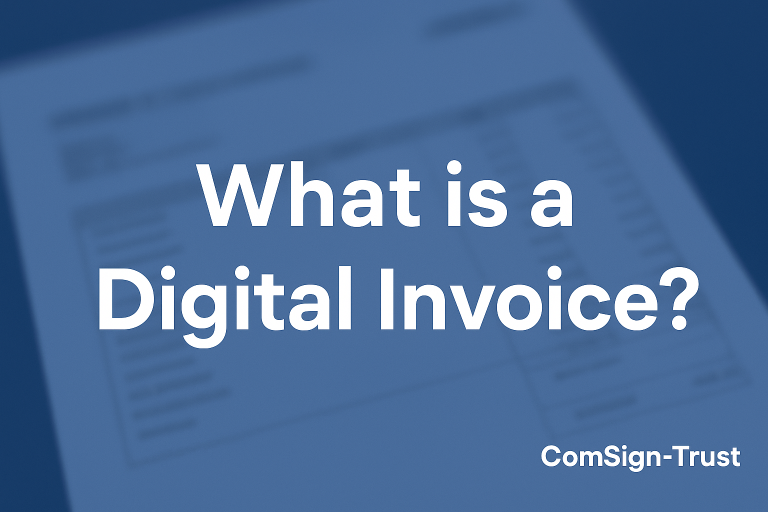Every “Install” click is, at its core, an act of faith. We trust that the software before us, whether it’s a mobile app, an enterprise update, or an IoT firmware patch, comes from a legitimate source and hasn’t been tampered with.
That invisible handshake of trust is made possible by code signing the digital seal of authenticity that tells us: “This code is exactly as its publisher intended.”
Code signing links a cryptographic identity to software integrity. It’s the quiet guardian behind the scenes, protecting the world’s operating systems, mobile platforms, and package managers from chaos.
But that guardian is about to be tested like never before. Welcome to the quantum revolution.
The Quantum Shockwave
For decades, our digital trust has rested on mathematical mountains – RSA, ECDSA, and EdDSA algorithms so complex that no classical computer could hope to climb them.
Then came quantum computing. And with it, a new reality: mountains can crumble.
Shor’s algorithm, when executed on a powerful enough quantum machine, could reduce today’s unbreakable encryption to child’s play, cracked in hours, perhaps even minutes.
The threat isn’t theoretical anymore. Labs around the globe are racing toward quantum breakthroughs, and attackers are already preparing with a sinister strategy:
Harvest now, decrypt later.
They’re collecting signed software and encrypted data today, waiting patiently for the quantum key that will unlock them tomorrow. That means the code we trust today may not be trustworthy tomorrow.
Post-Quantum Code Signing: Redefining the Shield
Enter post-quantum cryptography (PQC), a new generation of algorithms built not on fragile mathematical puzzles but on problems even quantum computers can’t easily solve.
These include lattice-based, hash-based, and code-based cryptography methods that promise a new kind of digital armor.
Yet, migrating to PQC isn’t as simple as swapping an engine mid-flight. Organizations must balance cryptographic strength with speed, size, compatibility, and the reality of existing infrastructure.
A secure transition must allow teams to:
- Stay compatible with current trust ecosystems.
- Deploy hybrid certificates blending classical and quantum-safe algorithms.
- Align with NIST’s PQC standards as they solidify.
Why Code Signing Has Never Been More Critical
Cyberattacks on the software supply chain, SolarWinds, Kaseya, and others showed us one brutal truth: even trusted updates can become Trojan horses.
In this climate, code signing is no longer a checkbox; it’s a battlefield requirement.
The pressing question isn’t “Is my code signed?” It’s “Will my signature survive the quantum age?”
Forward-thinking enterprises have already realized that quantum readiness is not a future project; it’s a current obligation.
The Challenges of a Quantum Transition
Transitioning to post-quantum code signing is like rebuilding a city while people still live in it:
- Algorithm Selection – NIST’s CRYSTALS-Dilithium looks promising, but real-world adoption demands optimization and testing.
- Certificate Management – Legacy PKI systems must evolve to handle hybrid cryptography.
- Operational Compatibility – Build and deployment tools must recognize new signature formats without breaking workflows.
- Performance – Larger keys and signatures demand smarter scaling, especially in IoT and cloud environments.
- Long-Term Trust – Code signatures must stay verifiable for decades. Quantum-safe timestamping is the only way to guarantee that.
Comsigntrust: Engineering Trust for the Post-Quantum Future
Few organizations sit at the crossroads of experience and innovation like Comsigntrust.
With deep roots in PKI, certificate management, and secure digital identity, Comsigntrust doesn’t just anticipate change; it designs for it.
Rather than waiting for a “quantum day zero,” Comsigntrust leads a hybrid cryptographic approach, signing certificates that blend classical and PQC algorithms, ensuring continuity, resilience, and future trust.
Comsigntrust’s Post-Quantum Vision
- Hybrid Certificates: Dual RSA/PQC or ECC/PQC signatures sign once, stay trusted for decades.
- Quantum-Resilient Timestamping: Ensuring signatures remain verifiable in a post-quantum world.
- Seamless Integration: CI/CD-ready signing platforms that scale effortlessly across DevSecOps pipelines.
- Compliance Built-In: Aligned with NIST and global PQC standards, no “compliance debt” down the line.
Comsigntrust helps enterprises test, deploy, and future-proof their digital trust architectures today before the clock runs out.
Hybrid Strategy: Building a Bridge to Tomorrow
Think of hybrid cryptography as a bridge suspended between two worlds, the classical and the quantum.
It allows organizations to:
✅ Continue using existing signing workflows.
✅ Embed quantum-resilient cryptography into every release today.
✅ Avoid a dangerous “signing gap” once quantum attacks become feasible.
It’s not about fear. It’s about foresight.
Preparing the Development Lifecycle
Quantum readiness isn’t a product; it’s a process. Here’s what it looks like in practice:
- Map Dependencies: Identify where cryptography lives in your codebase.
- Modernize PKI: Ensure flexibility to adopt PQC algorithms.
- Test Continuously: Simulate signing and verification using PQC test certificates.
- Align Vendors: Work with trusted partners like Comsign to secure your supply chain.
- Plan Ahead: Create re-signing strategies for legacy binaries as standards evolve.
Those who prepare early won’t just survive the transition; they’ll lead it.
From Research to Reality
NIST’s selection of CRYSTALS-Kyber (encryption) and CRYSTALS-Dilithium (signatures) signals the dawn of practical PQC.
Yet, real-world implementation will take time. Operating systems, certificate authorities, and CI/CD tools must evolve in sync.
That’s why acting now testing, experimenting, and adopting hybrid models is the smart, strategic move.
Waiting for quantum computers to arrive is like locking the door after the burglars have learned to phase through walls.
Trust, Reimagined
At its heart, code signing is about trust – trust that what we run, update, and deploy is genuine.
In the post-quantum world, that trust must be rebuilt on new foundations – mathematical, operational, and philosophical.
Comsigntrust’s strategy is a blueprint for that evolution: Agility over rigidity. Hybrid compatibility over chaos. Readiness over reaction.
Quantum computing may change the rules of cryptography, but with the right foresight, it won’t change the meaning of trust.
✨ The future of code signing is already being written. And with Comsign leading the charge, it’s a story not of fear but of innovation, resilience, and trust redefined.


